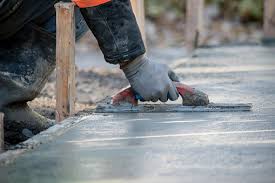In 2017, China used half of the world’s concrete, and the property industry accounted for a third of its expansion. Each major city has a floor-sized model of its urban development plans. These models are updated frequently, and the plastic models gradually transform into the concrete towers we see today. The resemblance between the two is startling. Yet, there are so many different kinds of concrete, it’s difficult to keep up.
The production of concrete has increased dramatically over the past few decades, and the use of this material is expected to continue to grow in the future. In addition, it’s crucial to mitigate the CO2 emissions from other industries. While concrete is still an important material, it is also undergoing a transformation. As concrete becomes more popular, its use will expand even further, and its role in the construction industry will become more visible.
In addition to its environmental impact, the evolution of concrete technology is accelerating globally. The construction of concrete buildings is essential for sustainable development and the reduction of global warming. The new technology used in construction makes it a more versatile material than ever before. The development of cement will also help mitigate the harmful effects of other industries, such as oil and gas. The future of concrete will be shaped by the future of the construction industry.

